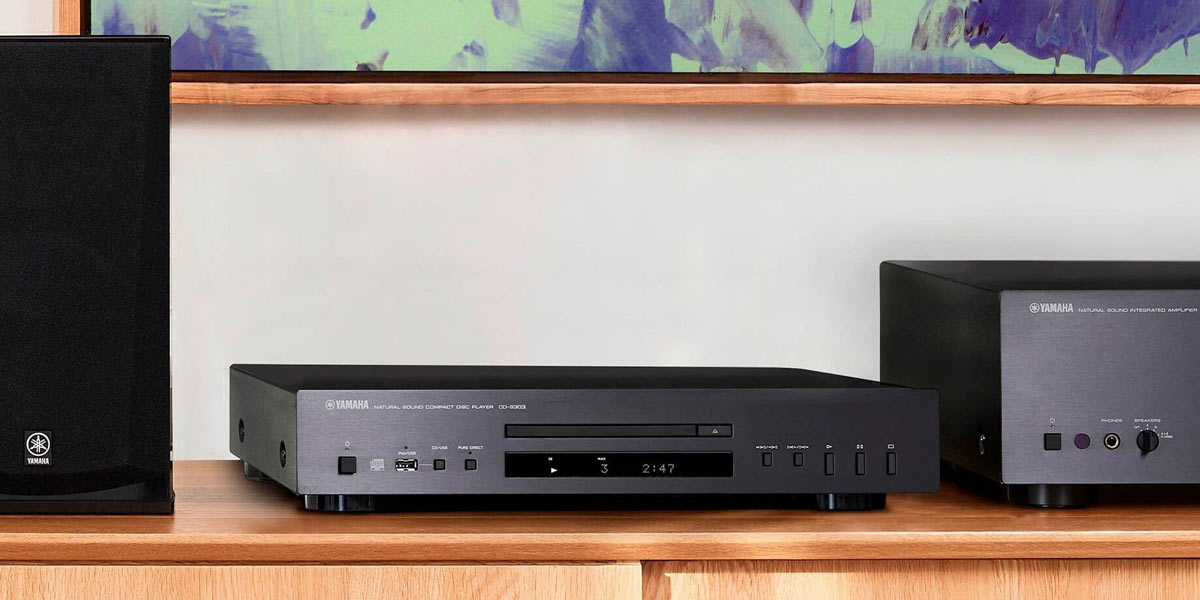Home>Production & Technology>Background Music>How To Make A Photo Slideshow With Background Music For A CD


Background Music
How To Make A Photo Slideshow With Background Music For A CD
Published: October 28, 2023
Learn how to create a captivating photo slideshow with background music for your CD. Follow our step-by-step guide and enhance your visuals with the perfect soundtrack.
(Many of the links in this article redirect to a specific reviewed product. Your purchase of these products through affiliate links helps to generate commission for AudioLover.com, at no extra cost. Learn more)
Table of Contents
- Introduction
- Step 1: Selecting the Photos
- Step 2: Choosing the Right Music
- Step 3: Organizing the Photos and Music
- Step 4: Creating the Slideshow
- Step 5: Adding Transitions and Effects
- Step 6: Syncing the Slideshow with Background Music
- Step 7: Reviewing and Adjusting the Slideshow
- Step 8: Exporting the Slideshow to a CD
- Conclusion
Introduction
Welcome to the world of photo slideshows with background music! Creating a photo slideshow is a fantastic way to breathe life into your precious memories and add a touch of magic to your photos. Whether you want to showcase your travel adventures, celebrate a special event, or simply create a memorable gift, a photo slideshow with background music is the perfect choice.
Gone are the days of flipping through photo albums or boring slideshows with no sound. With the advancements in technology, you can now easily create dynamic and captivating slideshows that combine your favorite photos with carefully selected background music. This article will guide you through the process of making a photo slideshow with background music for a CD, ensuring that your creation is both visually stunning and emotionally resonant.
Through a series of easy-to-follow steps, you will learn how to select the right photos, choose appropriate music, organize your content, and create a slideshow that truly tells your story. You will also discover how to add transitions and effects to enhance the visual appeal, synchronize the slideshow with the background music, and ultimately export the final product onto a CD.
Whether you’re a beginner or an experienced photographer, this article will provide you with valuable tips, techniques, and resources to make your slideshow creation process seamless and enjoyable. So, let’s dive in and unleash your creativity as we embark on this journey of creating a stunning photo slideshow with the perfect background music.
Step 1: Selecting the Photos
The first step in creating a photo slideshow with background music is selecting the photos you want to include. This step is crucial as it sets the foundation for your slideshow and determines the overall theme and mood.
Start by gathering all your photos in one place. This could be on your computer, a USB drive, or even physical copies if you plan to scan them. Sort through your collection and choose the images that best capture the essence of the story you want to tell. Consider the subject, composition, and emotional impact of each photo.
It’s important to strike a balance between variety and cohesion. You want your slideshow to have a diverse range of photos that hold the viewer’s interest, but they should also connect and flow seamlessly from one image to the next. Avoid overwhelming the audience with too many photos or repetitive shots.
As you select the photos, think about the narrative you want to convey. Are you telling a chronological story? Or do you want to focus on a specific theme or emotion? Organize your photos accordingly to ensure a logical progression throughout the slideshow.
If you’re struggling with selecting photos, consider the rule of thumb: less is more. It’s better to have a concise and impactful slideshow than an overly long one that loses the viewer’s attention. Remember, you can always create multiple slideshows or include additional images in the future.
Once you have finalized your photo selection, make sure to back up your files. Create a separate folder or cloud storage to safeguard your precious memories. Backing up your photos ensures that you won’t lose your hard work and allows for easy access in case you want to make changes or create different versions of the slideshow.
Now that you have your photos ready, it’s time to move on to the next step: choosing the right music to complement your slideshow.
Step 2: Choosing the Right Music
Selecting the right music for your photo slideshow is crucial as it sets the tone and enhances the overall impact of your visuals. The right music can evoke emotion, create atmosphere, and make your slideshow more engaging and memorable.
Consider the theme and mood of your slideshow when choosing the music. If you’re creating a slideshow to showcase a joyful occasion like a wedding or a birthday, you might opt for upbeat and celebratory tunes. On the other hand, if you want to convey a sense of nostalgia or reflect on a sentimental journey, you may choose slower, more introspective music.
When selecting music, think about the emotions you want to evoke in your audience. Do you want them to feel happy, moved, or inspired? The music should align with the narrative and visuals to create a cohesive and immersive experience.
There are various options for sourcing music. You can use royalty-free music libraries that offer a wide range of genres, styles, and moods. These libraries provide tracks that you can use without infringing on copyright laws. Some popular royalty-free music platforms include Epidemic Sound, Artlist, and PremiumBeat.
If you prefer a more personalized touch, you can compose original music or enlist the help of a musician to create a custom soundtrack for your slideshow. This option allows you to tailor the music specifically to your visuals, making it truly unique.
As you explore music options, pay attention to the length of the tracks. Ensure that the selected music pieces align with the duration of your slideshow. It’s important to have a balanced ratio of music and visuals, so they complement each other harmoniously.
When working with music, keep in mind that the volume should not overpower the narration or any important audio elements in your slideshow. Make sure to adjust the music volume so that it serves as a supporting element rather than a distraction.
Once you have chosen the music, download or purchase the tracks and save them in a separate folder along with your photos. This way, you can easily access and sync them when creating your slideshow.
With the perfect music selected, you’re ready to move on to the next step of organizing your photos and music.
Step 3: Organizing the Photos and Music
Now that you have selected the photos and music for your slideshow, it’s time to organize them in a way that tells a cohesive and engaging story. Proper organization ensures that your slideshow flows smoothly and captivates your audience from start to finish.
Start by creating a new folder on your computer specifically for your slideshow project. This folder will serve as a central hub for all your photos, music, and any other multimedia elements you plan to include.
Next, rename your photos using a consistent naming convention. This will help you easily identify and arrange them in the desired order. A simple naming convention could be using numbers in the file names, such as “01”, “02”, “03”, and so on. Alternatively, you can use descriptive names that reflect the content of each photo.
Once your photos are renamed, you can start organizing them in sequential order. This step is crucial if you want to tell a chronological story or create a visual narrative. Simply drag and drop the photos into the desired order within your project folder.
If you want to add variation to your slideshow, consider grouping similar photos together based on theme, location, or visual similarity. This way, you can create sections within your slideshow that showcase different aspects or moments of your story.
Alongside organizing your photos, it’s important to sync them with the chosen music. Listen to the music tracks and identify the key moments or transitions where you want specific photos to be displayed. Note down the corresponding time stamps or simply create a list of photo-music pairings to guide you during the slideshow creation process.
If you plan on using any other multimedia elements such as videos, text overlays, or voiceovers, ensure that they are also properly organized within your project folder. This will make it easier to integrate them seamlessly into your slideshow later on.
As you organize your photos and music, it’s a good idea to keep a backup of all your files. Consider using cloud storage or an external hard drive to ensure the safety of your precious memories and to have a backup in case of any unforeseen circumstances.
With your photos, music, and multimedia elements organized, you are now ready to move on to the exciting process of creating your slideshow.
Step 4: Creating the Slideshow
With your photos and music organized, it’s time to bring your vision to life by creating the slideshow itself. This step involves selecting a slideshow creation software or application, importing your photos and music, and arranging them in a visually appealing manner.
There are several software options available for creating slideshows, ranging from beginner-friendly programs to more advanced and feature-rich tools. Some popular choices include Adobe Spark, Microsoft PowerPoint, iMovie, and ProShow Gold. Choose a software that suits your skill level and provides the features you need to create the desired slideshow.
After launching your chosen software, create a new project and import the photos from your organized folder. Most slideshow creation software allows you to drag and drop photos directly into the interface. Arrange the photos in the order you want them to be displayed, utilizing the organization you established during the previous step.
Next, import your chosen music track(s) into the software. Follow the instructions provided by the software to add the music to the slideshow timeline. Make sure the music aligns with the length and transitions you have planned. Most software also allows you to trim the music or adjust its volume to fit the desired duration.
Once your photos and music are in place, begin customizing the individual slides. Most slideshow software provides options to add captions, text overlays, filters, and other visual effects. Experiment with different styles and transitions to enhance the overall visual appeal of your slideshow.
Consider incorporating animations or motion effects to bring your photos to life. Pan and zoom effects, fade-ins, and slide transitions can add a touch of dynamism and engagement to your slideshow. However, use these effects sparingly and purposefully to avoid overwhelming the viewer.
Additionally, if your slideshow software allows, consider adding motion graphics or animated elements to further enhance the storytelling experience. These elements can include titles, graphics, or animated overlays that seamlessly blend with your photos and music.
Don’t hesitate to play around with different layouts and arrangements to find the best way to display your photos. Experiment with the timing of slide transitions to ensure a smooth flow between each image. Remember to keep the viewer’s experience in mind, aiming to create a visually captivating and cohesive presentation.
As you work on creating your slideshow, preview it periodically to check for any discrepancies or adjustments needed. This will allow you to fine-tune the timing, transitions, and overall flow of the slideshow.
Once you are satisfied with your slideshow, save it within your software and move on to the next step: adding transitions and effects to enhance the viewer’s experience.
Step 5: Adding Transitions and Effects
Adding transitions and effects to your slideshow can greatly enhance the visual appeal and create a seamless flow between slides. Transitions are the animated effects that occur when one slide transitions into the next, while effects refer to additional visual enhancements that can be applied to individual slides.
Start by selecting a suitable transition style for your slideshow. Common transition options include fades, dissolves, wipes, and slides. Choose a style that complements the theme and mood of your slideshow. For example, a gentle fade transition can create a smooth and elegant feel, while a bold wipe transition can add energy and excitement.
When applying transitions, consider the timing and duration. Transitions that are too short may feel rushed, while transitions that are too long can cause viewer fatigue. Aim for a balanced and natural flow between slides, ensuring that transitions neither distract nor overshadow the main content of your photos.
In addition to transitions, explore the possibility of adding subtle effects to individual slides. These effects can include filters, color adjustments, shadows, or overlays that enhance the visual impact of your photos. Experiment with different effects to find the right balance that enhances the overall aesthetic without overpowering the images.
Be cautious not to overuse transitions and effects. The purpose of these elements is to enhance the viewer’s experience, not overshadow the main content of your slideshow. Remember that simplicity and elegance often prevail over excessive visual distractions.
While adding transitions and effects can elevate your slideshow, maintain consistency throughout. Stick to a set of predefined transition styles and effects to create a cohesive and polished presentation. Too many different transitions or effects may create visual clutter and detract from the overall impact.
As you add transitions and effects, frequently review your slideshow to ensure the timing and overall flow remain smooth and engaging. Adjust as needed, making sure the transitions and effects seamlessly blend with your photos and music.
Take advantage of the preview feature in your slideshow software to check how the transitions and effects appear in real-time. This allows you to make any necessary adjustments before finalizing your slideshow.
Once you are satisfied with the transitions and effects, it’s time to move on to the next step: syncing the slideshow with the background music.
Step 6: Syncing the Slideshow with Background Music
Syncing your slideshow with the background music is a crucial step in creating a captivating and immersive experience for your viewers. The synchronization ensures that the transitions, effects, and timing of your slides align harmoniously with the accompanying music.
Start by carefully listening to your chosen background music and paying attention to its tempo, rhythm, and emotional cues. Mark important moments or beats in the music that you want to highlight or synchronize with specific photos or transitions.
In your slideshow software, locate the timeline or editing panel that allows you to adjust the timing of your slides. Syncing the slideshow with the background music involves aligning the key moments in the music with the corresponding photos or transitions in your slideshow.
Begin by identifying the starting point of your music track and aligning the first photo or slide with the beginning of the music. This ensures a seamless and synchronized start to your slideshow.
Continue syncing subsequent slides and transitions with the musical cues you previously marked. For example, you can time a dramatic photo reveal or a transition effect with a powerful beat or melody in the music.
Experiment with the timing and duration of slides to maintain harmony between the visuals and the music. Adjust the duration of individual slides or transitions if necessary, making sure they align with the flow and intensity of the background music.
Consider incorporating visual elements that respond or react to the music. This can be achieved through timed transitions, animated graphics, or text effects that sync with the rhythm and tempo of the music. These synchronized elements can greatly enhance the viewer’s emotional experience and make your slideshow more dynamic.
Regularly preview your slideshow with the music to ensure the synchronization is smooth and effective. Make any necessary adjustments to achieve a seamless integration between the visuals and the background music.
It’s important to note that the volume of the background music should be balanced with any accompanying narration, voiceovers, or other audio elements in your slideshow. Adjust the music volume accordingly to prevent it from overpowering other parts of your content.
Once you are satisfied with the synchronization between your slideshow and the background music, proceed to the next step: reviewing and adjusting your slideshow to ensure a polished final product.
Step 7: Reviewing and Adjusting the Slideshow
Now that your slideshow is synchronized with the background music, it’s time to carefully review and adjust any elements that may need refinement. This step ensures that your slideshow is polished and ready for the final presentation.
Start by watching your slideshow from start to finish, paying close attention to the overall flow and pacing. Consider how each transition, effect, and slide contributes to the narrative and emotional impact of your story.
Take note of any areas where the timing feels too rushed or too slow. Adjust the duration of individual slides or transitions to maintain a balanced and engaging pace. You want your viewers to have enough time to appreciate and absorb each image without losing interest.
While reviewing your slideshow, also be attentive to any inconsistencies or technical issues. Look out for spelling errors, misplaced elements, or any visual distractions that may take away from the overall impact.
If you have the opportunity, gather feedback from a trusted friend or family member who can provide a fresh perspective. They may notice things that you missed or offer valuable insights to improve your slideshow further.
Consider the order and arrangement of your photos. Do they tell a cohesive and compelling story? Can you make any alterations to enhance the narrative flow? Rearrange slides if needed to create a more engaging and logical progression of events or themes.
Pay attention to the visual aesthetic of your slideshow. Ensure that the colors, saturation, and contrast of your photos are consistent and visually appealing. Adjust as necessary to create a harmonious and visually pleasing experience for your viewers.
Review the text elements in your slideshow, such as captions or titles. Check for proper grammar, spelling, and readability. Make revisions if needed to ensure clarity and professionalism.
During the reviewing process, don’t be afraid to make necessary changes or fine-tune details. The goal is to create a slideshow that you are proud to share and that leaves a lasting impression on your viewers.
After reviewing and making any adjustments, save your final version of the slideshow. Create a backup copy of your project files to ensure the safety of your hard work and to have the option to make further edits or changes in the future.
With your slideshow thoroughly reviewed and adjusted, it’s time to move to the final step of exporting it to a CD for easy playback and sharing.
Step 8: Exporting the Slideshow to a CD
After putting in the effort to create a stunning slideshow, it’s time to export it to a CD for convenient sharing and playback. Exporting your slideshow to a CD ensures that it can be enjoyed on any compatible CD player or computer with a CD-ROM drive.
First, make sure you have a blank CD-R or CD-RW disc ready for burning your slideshow. CD-R discs can only be written to once, while CD-RW discs can be rewritten multiple times. Choose the appropriate type based on your needs.
Next, open your slideshow software and locate the export or share option. This may be found under the File, Export, or Share menu. Select the option that allows you to export your slideshow to a video format compatible with CD burning.
Choose the output format for your slideshow. The most commonly supported format for burning to CD is MPEG-2 or MPEG-4. However, verify the compatibility of your CD player or target devices to determine the specific format requirements.
Set the resolution and quality settings for your exported slideshow. Higher resolution and quality settings can result in a better visual experience, but keep in mind that they may also increase the file size and require more space on the CD.
Specify the location where you want to save the exported slideshow file. Choose a destination that is easily accessible so you can locate it when it’s time to burn the CD.
Once the export is complete, it’s time to burn the slideshow onto the CD. Insert the blank CD-R or CD-RW disc into your computer’s CD-ROM drive.
Open your preferred CD burning software. If your computer doesn’t have a built-in CD burning software, there are various third-party options available for download.
Select the option to create a new data or video CD project. Locate the exported slideshow file from the destination you previously specified.
Add the exported slideshow file to the CD project. You can typically do this by dragging and dropping the file into the CD burning software interface.
Review the settings and options for the CD burning process. Ensure that the software is set to burn in the proper format for compatibility with your CD player and that the burning speed is appropriate.
Click the burn or start button to initiate the CD burning process. The software will write the slideshow file onto the CD, creating a playable disc.
Once the CD burning process is complete, eject the CD from your computer’s CD-ROM drive. Label the CD with a descriptive title or cover design to easily identify its contents.
Your stunning photo slideshow with background music is now successfully exported to a CD and ready to be shared with friends, family, or anyone you wish to share your precious memories with.
Remember to keep the original project files on your computer or a backup storage device in case you want to make future edits or create additional copies of the slideshow.
Congratulations on completing all the steps to create and export your photo slideshow with background music to a CD. Enjoy sharing and reliving your cherished moments with your loved ones!
Conclusion
Creating a photo slideshow with background music for a CD can be a truly rewarding and creative process. It enables you to transform your cherished memories into a captivating visual experience that can be enjoyed by yourself and others for years to come.
Throughout the steps outlined in this guide, you have learned how to select the right photos that tell a compelling story, choose suitable background music that complements the visuals, and organize your content in a cohesive and engaging manner. You have also discovered how to create the slideshow, add transitions and effects for visual appeal, synchronize it with the background music, and review and adjust it to perfection.
Remember to have fun and let your creativity shine as you experiment with different styles, effects, and music choices. Your slideshow is a reflection of your unique story and perspective, so feel free to personalize it in ways that resonate with you and your intended audience.
Once you have exported your slideshow to a CD, be sure to share it with those who will appreciate the memories and emotions it captures. Whether it’s for a family gathering, a special occasion, or simply for personal enjoyment, your photo slideshow will undoubtedly leave a lasting impression.
Keep in mind that this guide serves as a foundation, and there are countless possibilities for further customization and exploration. As you gain more experience and confidence, you can delve deeper into advanced techniques, such as adding voiceovers, custom animations, or incorporating multimedia elements.
Lastly, always remember to safeguard your original project files and keep backups of your photos and music. By doing so, you can revisit and revise your slideshow in the future or create new versions to suit different purposes.
Now it’s time to unleash your creativity, let the music play, and bring your memories to life through a mesmerizing photo slideshow with background music. Enjoy the process, and may your slideshow bring joy and nostalgia to all who experience it.











